Talk with our local travel specialist who can help organize your trip.
Upper Mustang Trek - A Complete Guide
Upper Mustang Trek takes you to the remote trans-Himalayan arid landscape of the mysterious former kingdom of Mustang in northwestern Nepal. This easy to moderate level trek is best known for rich history, culture, amazing mountain views, and dramatic landscape, similar to Tibet bordering in the north.
For a long time, Upper Mustang was ruled by the monarchs until 2008, when Nepal was declared a republic. While the Lower Mustang region opened itself to tourism back in the 1970s, Upper Mustang was still off-limits to tourists, thus dubbed as The Forbidden Kingdom of Lo. Eventually, tourism was introduced there in 1992. Upper Mustang has been classified as a restricted area to date to protected and preserve the rich Tibetan Buddhist and Thakali culture and the Bon religion.
In recent times, it has seen a lot of advancement in terms of tourist inflow. Once where there were camping grounds only, now have multistoried tea houses. Getting to Upper Mustang has become easier nowadays due to enhanced road conditions. You can reach Upper Mustang by trek, jeep tour, bike ride, or a combination of tour and trek. Tourists from all over the world flock to this region blanketed in the sand and stuck back in time. Upper Mustang is most famous for views of mountain ranges, the deepest valley and gorge in the world - Kali Gandaki, dramatic rock formations, extensive plateaus, unique culture, traditions, lifestyle, and remoteness are perhaps what make the trek so appeasing for many backpackers.
The Upper Mustang trek complete guide has been put together to offer valuable insights on the realities, expectations, and preparation required for the trek. Go through the information about cost, permits, best season, itinerary and more, before you board your next flight for the trek to Upper Mustang Nepal.
Trip Facts
|
Trip Days |
15 Days |
|
Trekking Days |
12 Days |
|
Highest point |
4,210m/13,812ft at Pa Pass |
|
Difficulty level |
Easy to Moderate |
|
Permits |
Restricted Area Permit (RAP) & Annapurna Conservation Area Project Permit (ACAP) |
|
Accommodation |
Tea-Houses |
|
Best Season |
Spring (March to May), Autumn (September to November), and Monsoon (June to August) |
Table of Content
- Upper Mustang Trek Highlights
- Why the Upper Mustang Trek
- Upper Mustang Trek Map
- The Best Upper Mustang Trek Itinerary
- Upper Mustang Trek Variations
- Upper Mustang Trek Cost
- Trekking Permits for the Upper Mustang Trek
- Upper Mustang Trek Difficulty
- Upper Mustang Trek Altitude Map
- Accommodation while trekking in the Upper Mustang
- Food while Trekking in the Upper Mustang
- Electricity Facility En Route
- Internet Connectivity En Route
- Best Season for Upper Mustang Trek
- Safety and AMS in the Upper Mustang
- What to Pack for the Upper Mustang Trek?
- ATM and Where to Withdraw Money
- Travel Insurance for Upper Mustang Trek
- How to book Upper Mustang Trek?
- Upper Mustang Trek Tips
- Conclusion
Upper Mustang Trek Highlights
- Traverse to the unique, semi-arid, and barren landscape of the Mustang region
- Views of the highest 7,000m and above mountains like Annapurna, Dhaulagiri, Nilgiri along the trail
- Explore the lifestyle of the ethnic Thakali and Tibetan Buddhists living in the villages of Mustang and Upper Mustang
- Cross the high Pa Pass at the maximum elevation of 4,210m/13,517ft
- Witness the medieval caves made by the early settlers of the Kali Gandaki Valley in the high cliffs along the way
- Visit the 500 years old Tsarang Goempa Monastery
- Visit the 15th-century monasteries in Lo Manthang, including Jampa Lhakhang, Tubchen, Chode, and Choprang Goempa.
- Visit the holy Hindu and Buddhist pilgrimage site of Muktinath
- Get a chance to witness the annual festival of Tiji in Lo Manthang during May
Why the Upper Mustang Trek
Upper Mustang is famous for its unique Tibetan Buddhist culture, Bon religion, climate, and topography which is different than other trekking regions in Nepal. The region has a trans-Himalayan climate that is cool and arid and falls in the rain shadow area. Hence, unlike other regions in Nepal, trekking in the Upper Mustang region is feasible even in the monsoon and summer seasons apart from the popular Autumn and Spring seasons. The weather is welcoming all around the year. Imagine the close-up views of a snow-covered mountain range in the backdrop of copper-red cliffs and barren land with a gigantic river flowing between the Kali Gandaki valley.
Furthermore, due to Upper Mustang’s location bordering Tibet, Tibet's culture and tradition are heavily influenced. It has long been a protected region secluded from the rest of the world, which is why heading to Upper Mustang takes you back in time. The ancient monasteries, traditional houses, medieval caves, unique dresses seem to be tucked away in the past. Upper Mustang height ranges from 3,050m/10,004ft near Chele to as high as 6,700m/22,000ft at Khamjung Himal. The trek will take you to the maximum altitude overnight stay of 3,730m/12,235ft at Lo Manthang.
Hence, trekking to Upper Mustang is a unique, eye-opening, and awe-striking experience. It is an easy to moderate trek best for the novice as well as regular trekkers. Even if you have been to Annapurna Base Camp, Everest Base Camp, Langtang Valley, or other treks in Nepal, it is worth revisiting Nepal just for the Upper Mustang Trek.
Upper Mustang Trek Map
The Best Upper Mustang Trek Itinerary
To reach from Kathmandu to Upper Mustang, you can take a two-way drive and flight and 12 days of trekking. The best Upper Mustang Trek itinerary commences with a drive from Kathmandu to the lakes, Pokhara. Mustang is 146km far from Pokhara. So, we take a scenic flight from Pokhara to Jomsom, the commercial hub of the Mustang region. The hike begins from there to the mythical Kagbeni village. Next day head to the gateway to Upper Mustang; Chele. The trail leads to Syangboche, Ghami, and Tsarang village and ultimately the capital of the former Kingdom at Lo Manthang.
After an acclimatization and excursion day at Lo, head to the ancient villages of Yara, Tangbe, and Tetang towards Muktinath, the holy Hindu and Buddhist temple. From there, trek back to Jomsom then return to Pokhara via a scenic flight. Conclude the amazing trek by driving back to Kathmandu city.
Outline itinerary
|
Day 1 |
Take a drive from Kathmandu (1,400m/4,592ft) to Pokhara (800m/2,625ft) 6-7hours (200 km/124 miles) |
|
Day 2 |
A flight to Jomsom (2,700m/8,856ft) and hike to Kagbeni (2,810m/9,217ft) 25 minutes flight, 3-4 hours trek |
|
Day 3 |
Trek to Chele (3,050m/10,004ft) 5-6 hours trek |
|
Day 4 |
Trek to Syanbochen (3,475m/11,398ft) 6-7 hours trek |
|
Day 5 |
Trek Syanbochen to Ghami (3,520m/11,546ft) 5-6 hours trek |
|
Day 6 |
Trek to Tsarang (3,620m/11,874ft) 5-6 hours trek |
|
Day 7 |
Trek to Lo-Manthang (3,730m/12,235ft) 3-4 hours trek |
|
Day 8 |
Excursion of Lo Manthang |
|
Day 9 |
Trek to Yara (3,838m/12,589ft) 6-7 hours trek |
|
Day 10 |
Trek to Tangbe (3,240m/10,628ft) 7-8 hours trek |
|
Day 11 |
Trek Tangbe to Tetang (3,067m/10,060ft) 8-9 hours trek |
|
Day 12 |
Trek to Muktinath (3,800m/12,464ft) 7-8 hours trek |
|
Day 13 |
Trek to Jomsom (2,700m/8,856ft) 5-6 hours trek |
|
Day 14 |
Return back to Pokhara by flight (800m/2,625ft) 25 minutes of flight |
|
Day 15 |
A drive from Pokhara to Kathmandu (1,400m/4,592ft) 6-7 Hours (200km) Drive |
Upper Mustang Trek Variations
Apart from the above-mentioned itinerary, there is another Upper mustang trekking itinerary that you can choose from, depending upon the type of trekking experience you are looking for, your travel budget, and the trip duration. The itinerary ranges anywhere from 8 to 18 days.
Those who are short on time and wish to travel luxuriously could go for an 8 days overland tour where you can opt Upper Mustang jeep tour. You will drive from Jomsom to Lo Manthang and drive to Muktinath. So, the entire tour would comprise of a drive and a two-way flight. If you wish for a mixture of trek and drive, you can trek from Jomsom to Lo Mathang and then return to Jomsom by Jeep, which would take about 10 days. You can also skip the visit to Muktinath and go on a trek only towards Lo Manthang and trek back to Jomsom, which would take 13 days. Those interested in exploring the Tibetan Buddhist culture and Bon Religion can even enjoy an 18 days Upper Mustang Tiji festival trek to visit Lo Manthang and enjoy the three days Tiji festival celebrated there.
You can check out The 5 Best Upper Mustang Trek itinerary.
Where to travel next?
Get help from our travel specialists for holiday ideas that matches your interests.
Upper Mustang Trek Cost
Upper Mustang trek cost is generally higher than other trekking destinations in Nepal due to its remoteness and the hefty restricted area permit cost. It would help if you also remembered that solo trekking is not permitted in Upper Mustang, so in any case, you need to have a licensed guide along with you throughout the trek. There are two ways you can go for the trek:
All-Inclusive Package for Upper Mustang Trek
An all-inclusive package offered by a travel agency ranges between USD 1600 to USD 3000. The cost, however, depends also upon the value of the services begin offered in the package. It could be different in terms of transportation (land and air), accommodation and food standard, no people in the group, guide and porter facility, and more.
In general, these packages include round trip domestic flight, land travel, accommodation, meals during the trek, permits, guide and porter facilities with their insurance, accommodation, and food. Although, the package does not include any personal interest expenses like a hot shower, extra porter, bar bills, snacks, internet, bottled water, travel insurance, etc.
You can either go with a group or can go individually. With a group, it will cost you a little cheaper than going individually. But in both these cases, the travel agency will provide a guide and porter as it is mandatory to have a guide.
Hire Guide and Porter and Pay As You Go
You can choose to get in touch with a local guide and porter and hire them for your trek. You will pay for the accommodation, food, transportation, permits, personal expenses, and all the other cost as you go throughout the trek.
Hiring guide and porter alone will costs
- Guide: USD 25 to USD 35/day + tips
- Porter: USD 15 to USD 25/day + tips
You will have to manage their accommodation, insurance, food, and transportation. You could keep this cost at a minimum if you plan to go with a larger group as the cost would be split evenly. You have to manage the trek by yourself with the assistance of your guide. Organizing a trek in such a restricted area would be a hassle.
Ensure that the guide is licensed, speaks English if not your mother tongue, has prior experience of visiting the region, and has knowledge of the history and culture of the area. Also, the porter can only carry about 15 kg of weight.
Trekking Permits for the Upper Mustang Trek
Visiting Upper Mustang requires permits as the region is registered as a restricted area in Nepal. It shares an open border with Tibet (China). To preserve and protect the ancient Tibetan Buddhist culture and Bon religion of Upper Mustang, a Restricted Area Permit is required for foreign tourists. Furthermore, as the trail passes through the Annapurna Conservation Area, a permit is required for it as well.
Following are the mandatory Upper Mustang Trekking permit:
- Upper Mustang Restricted Area Permit (RAP): USD 500 per person for the first 10 days then USD 50 per person per day thereafter
- Annapurna Conservation Area Project Permit (ACAP): USD 30 per person for foreigners and USD 10 per person for SAARC Nationals (approx.)
Restricted Area Permit provides all the trekker's information along with the route, emergency contact, and more which is why a TIMS card is not required for this trek.
The essential documents required include a copy of your passport, 3 passport-sized photos, Travel Insurance policy number, information about your daily itinerary, and trekking route. A trekking company will manage everything.
The permits are non-transferable and non-refundable. Entry fee is not required for children under 10 years of age. Also, ensure that you carry both the permits at all time and show it at the respective checkpoints. The permit will be checked at the Chele checkpoint, the gateway to Upper Mustang.
Recommended Read: How to get TIMS card and trekking permits in Nepal
Upper Mustang Trek Difficulty
Upper Mustang Trek difficulty is graded as an easy to moderate level. The maximum elevation you will be crossing in the trek is 4,210m/13,517ft at the PA pass. As the maximum altitude is not so high, there are not many cases of severe altitude sickness, unlike Langtang, Annapurna, and Everest Base Camp treks. The general 15 days trip has 12 trekking days. On average, you will have to walk from 5 to 6 hours on trekking days. Somedays, you might have to walk 3 hours at a minimum, and somedays you might have to walk 9 hours at a maximum. The difficulty level is enhanced particularly when you take the trip during the winter season because of the snow and heavy warm clothes. Hence, it is best to travel during Spring, Autumn, and Monsoon. The trekking route is very dusty and arid, so during strong winds, make sure to wear sunglasses to protect your eyes.
All in all, it is a trek suited for professional as well as novice trekkers. You do need to have a certain level of preparation before hopping on for the trek. To develop stamina and a good physique, you can engage in some regular exercise, jogging, swimming, hiking activities a month before the trek. Furthermore, it would be best to cut smoking and drinking alcohol before and during the trek.
Upper Mustang Trek Altitude Map
Accommodation while trekking in the Upper Mustang
Upper Mustang is a tea house accommodation trek. They are traditionally made houses of brick and mud, mostly painted white. These tea houses are very homely and have a few numbers of rooms. In Lo Manthang, the newly structured concrete tea houses are multi-stories and accommodate many trekkers. The rooms usually have two single beds with minimal furniture around. Although the pillow and blankets are provided, they are not as fluffy and warm, so it is best to use a sleeping bag on top and hygiene reasons.
Only a few tea houses have attached bathrooms, and the rest use the communal toilets/bathrooms. Most of them have squat seats. Carry your toilet paper and pocket soap because not every tea house facilitates it.
Showers are also not attached in the tea house and are communal as well. For a hot shower, you will have to pay USD 2 approximately in the mustang region. Most tea houses rely on solar heating, and some have gas showers as well.
The dining room is also communal, with large tables accommodating many tourists. The walls are colorfully painted, and tables have butter lamps and incense. Some tea houses have gas heaters in the room to keep warm.
Food while Trekking in the Upper Mustang
Although the food options are similar in Upper Mustang and other trekking areas, you will find many Chinese/Tibetan dishes in the trail due to the Tibetan Buddhist community living there. In general, the food in the Mustang region is decent but not lavish, as found in Kathmandu and Pokhara.
‘Dal Bhat’ or Lentil Soup and Rice with vegetable curry is a classic dish in the trek because it is a staple Nepali diet. The bottomless meal is a favorite among trekkers as it fills your hunger. It costs around USD 4, which you can have for lunch or dinner. You can find western dishes like porridge, pancakes, eggs, jam, honey, and more for breakfast. You can try the fluffy Tibetan bred. Thukpa or Tibetan noodle soup is also famous in this region which you should try out.
As the Mustang region is known predominantly for apple farming, you will find many drinks and snacks made out of apples. You can try their famous apple juice and local wine. Soft drinks generally cost double that found in the city area, because of the transportation cost.
Due to the hot and dry climate, you need to drink plenty of water, almost 3 to 4 liters a day. Water can be found in communal taps in the villages along the way. However, carry a water bottle with a filter flask or carry water sterilization pills. Although you can buy mineral water in the small shops and tea houses along the way, it costs a lot, sometimes up to USD 1.5 for half a liter.
Electricity Facility En Route
Electricity Facility in major cities like Kathmandu and Pokhara and tourist crowded area like Muktinath is easily accessible. However, in the Upper Mustang trail, there are many power cuts. In many villages like Lo Manthang, Jomsom, and Kagbeni, tea houses rely on solar power, which is not always reliable.
When you are looking to charge your gadgets, ask the tea house owner for the assigned time of the day when they turn on the power, usually in the evening, to save power the rest of the day. As far as possible, carry portable solar panels, power banks, and extra camera batteries. Also, keep your phone on flight mode during the trek to save the charge.
Internet Connectivity En Route
Internet Connectivity is very erratic and unreliable during the trek. As it is a rural area, it isn't easy to find Wi-fi facilities in tea houses after Jomsom. Some tea houses along the route do have internet service, but they charge more than USD 1 per hour, which does not work. Hotels in Muktinath have a little better Wi-Fi facility to connect with your family and share your pictures on social media sites there.
Another alternative for internet connectivity is using a local GSM-operated SIM card that you can buy from Kathmandu or Pokhara. You can use mobile data connectivity (GPRS) by purchasing a suitable data pack. However, like the Wi-Fi, at higher altitudes, the network is patchy. Hence, it is best to use the internet only when necessary.
Best Season for Upper Mustang Trek
The best time to do the Upper Mustang treks is considered to be Spring (March to May), Autumn (September to November), and the Monsoon (June to August). The topography and weather of the Upper Mustang are quite different than other trekking regions in Nepal. As it falls under the rain shadow area, even the monsoon season does not see heavy rainfall, making it feasible for trekking.
Spring Season from March to May is considered to be the best time for the Upper Mustang trek and other treks all over Nepal. Particularly in the region, the temperature ranges between 16 to 22 degrees Celsius. Besides the vivid mountain views under a clear blue sky, the month of May also welcomes the major Tibetan Buddhist festival of Tiji in Lo Manthang. You will get to experience the history, culture, and tradition of the people living here. You might get a chance to interact with the former monarch family who attends the festival.
During the Autumn season from September to November, the Upper Mustang weather is cool, and temperatures range from 12 to 20 degrees Celsius. At nights the temperature may fall to -4 degrees Celsius. The winds will be pleasing during this time, and you can get clear views of the Dhaulagiri, Nilgiri, and Annapurna range.
The monsoon season falls from June to August and sees high rainfall in other parts of Nepal. However, in Upper Mustang, the rain shadow area does not see heavy downpour, making it a good season to trek. During August, you can also witness the Yartung Mela celebrated in Lo Manthang and Muktinath. However, be mindful of the possibility of flight cancellations while traveling from Pokhara.
Winter Season from December to February, on the other hand, is the coldest time. The temperature can fall as low as -22 degrees Celsius at a higher altitude. You will have to be extra cautious of the snowy trail and carry heavy warm clothes.
Safety and AMS in the Upper Mustang
Upper Mustang is a restricted area, and solo trekking is prohibited, so you need to go with a group with a licensed guide. Hence, the assistance of an experienced guide makes the trek safer. The trail is also clear, so there are no chances of getting lost on the way. Furthermore, the locals are warm and welcoming.
The maximum altitude that the 15 days trip goes is 4,210m/13,812ft which is not as high as other treks in Nepal. Hence, altitude sickness is not so common in the Upper Mustang Trek. AMS or Acute Mountain Sickness is a less severe form of Altitude Sickness. As the elevation increases, the air depletes' oxygen level, so the body cannot easily accommodate it. Mild symptoms such as headaches, fatigue, insomnia, and severe symptoms such as dizziness, vomiting, rapid heart rate, and fainting can be seen. Trekkers generally start experiencing symptoms of AMS when the altitude rises above 3,000m/9,842ft.
You can avoid falling victim to altitude sickness by properly following the itinerary and taking acclimatization day. Also, do not rush to the destination. Take small steps at higher altitudes so that your body can accommodate the change. You can take precautions by taking Diamox or similar medication that prevents AMS in consultation with your doctor. If you still happen to experience any of the symptoms, you can immediately consult with your trek guide, who will help you.
Where to travel next?
Get help from our travel specialists for holiday ideas that matches your interests.
What to Pack for the Upper Mustang Trek?
The 15 days Upper Mustang Trek packing list comprises some warm clothing and a few basic gears and equipment. The packing list also depends upon which trekking season you are going to.
Follow the below packing list for the trek:
- Rucksack or duffle bag for our porter to carry
- Daycare bag (30L) for you to carry your daily necessary items
- Light T-shirt and trekking pants (used during the day)
- Warm Clothes (Head, Hands, Upper Body, Lower Body, required as you progress to higher altitude)
- Down Jacket (for higher altitudes, can be worn during the evening and night)
- Strong hiking boots and flipflop
- Headlamp (useful during a power outage)
- Toiletries and personal hygiene products (toothbrush, paste, sanitizer, tissues, feminine products, cosmetics, etc.)
- Sunglasses and Sun Hat/Cap
- Medication and first aid
- Items for entertainment (books, iPod, playing cards, etc.)
- Smartphone, personal gadgets
- Trekking pole/ stick
For a detailed packing list, check out the Packing List for Trekking in Nepal blog. Most of the treks in Nepal require similar gear and equipment. However, as this is a tea house trek, you will not require any camping gear, but you could carry a sleeping bag to keep yourself warm during the night. Moreover, this is an easy to moderate trek, so you might not require heavy gears like gaiters and crampons. There are many trekking gears and equipment rentals and shops in Thamel, Kathmandu, and Pokhara, where you can buy/hire them rather than dragging them from home. Apart from the basics, you can also get in touch with your trekking agency and ask them to prepare a list for you.
ATM and Where to Withdraw Money
You could use ATMs in Kathmandu, Pokhara, Jomsom, and Muktinath in Mustang. As Jomsom is the commercial hub of the Mustang region, bank and ATM facilities are also found there. From there, you will not get such a facility until Muktinath, another tourist hub. Although there are a few private bank branches in Lo Manthang and Kagbeni, ATM is not available. Moreover, it is a wiser option to carry cash, particularly Nepali Rupees (NPR), because money exchange is not found in the Mustang region. Tea House owners and locals will only take NPR and not accept any foreign currency in Upper Mustang. You have to understand that Upper Mustang is a remote area without much development going on, so they are still behind in such advancements.
In essence, it is better to withdraw Nepalese Rupees back to Kathmandu and carry them throughout the trek rather than relying on ATMs.
Travel Insurance for Upper Mustang Trek
Travel Insurance is very important if you are traveling to foreign countries or any high-risk area. Upper Mustang falls in a remote restricted area of Nepal with limited vehicle accessibility and barely any health post in the trail. Although the Upper Mustang trek is not that risky, you might fall victim to Altitude Sickness as the trek crosses 4,000m/13,123ft of altitude. Due to such reasons, it might be challenging to get proper and prompt treatment in case of unfortunate incidents or illnesses. There might be a need for helicopter rescue with a high cost in unfortunate cases.
For these unforeseen incidents, it is vital to get travel insurance for this trek. While taking up a travel insurance policy, make sure that you look for a trustworthy insurance company and plan that addresses insurance coverage against high altitude treks up to 5,000m/16,404ft and a cancellation policy. Give the information of your day-to-day itinerary, maximum altitude, trekking region, emergency contact details, and other such information to your insurance company. You could refer to the most popular World Nomad service experienced in the insurance coverage of outdoor activities in Nepal.
How to book Upper Mustang Trek?
Booking for this trek can be done with the help of a local travel agency. These agencies have in-depth knowledge of the requirements for this trek. As Upper Mustang is a restricted area, you need to go with a group of at least 2 members and a licensed guide.
However, if you do not wish to go with a group, then some experienced travel agencies will manage your trek with no one else but a guide to go along with you. Here, two permits are mandatory to be bought even if you are only going for the trek. The agency can compromise the group but having a guide along is necessary.
As you cannot have it done on your own, it is best to book a travel agency like Third Rock Adventures with previous experience in organizing such treks.
Upper Mustang Trek Tips
Following are some of the essential tips to consider during Upper Mustang Trek:
- As Upper mustang is a semi-arid region, you need to drink a lot of water. Do not buy a mineral water bottle, instead carry a bottle with an inbuilt filter or some water purification pills and fill water from communal drinking taps.
- You can hire or buy trekking equipment and gear from Thamel in Kathmandu or Pokhara from trekking rentals and stores, which will be easier than bringing huge luggage from home.
- Always carry toilet paper, sanitizer, and paper soaps for sanitation
- Carry Nepalese Rupees (NPR) from Kathmandu or Pokhara because ATM, banks, currency exchange, or QR payments are rare in the remote upper mustang region.
- Walk slow, do not rush to ascend, and/or have Diamox or other altitude sicknesses precautionary medication in consultation with your doctor to avoid altitude sickness.
- Try local cuisine like Dal Bhat, Tibetan Bread, Tibetan noodles readily available, tasty, cheaper, and more fulfilling than other dishes on the menu in Mustang tea houses.
- Snacks are expensive in higher elevation so carry some dry fruits, energy bars, cookies from Pokhara for the trek.
- You cannot take or fly your drone without getting permission from the concerned authorities.
- Avoid consuming meals during the trekking days because your body might not easily digest them at a higher altitude. It might not be fresh and would cost unnecessarily expensive.
Conclusion
The Upper Mustang trek is one of the most distinct experiences best for the novice as well as regular trekkers in the remote northern mustang region of Nepal. The complete guide is an effort to keep the interested trekkers informed about the essentials before taking this trek.
Like what you read? Consult with our team of professionals at Third Rock Adventures and board on a flight to Nepal for the Upper Mustang Trek, and we will take care of the rest for you.
- Written by: Naba Raj Amgai
Updated: Mar, 16, 2021

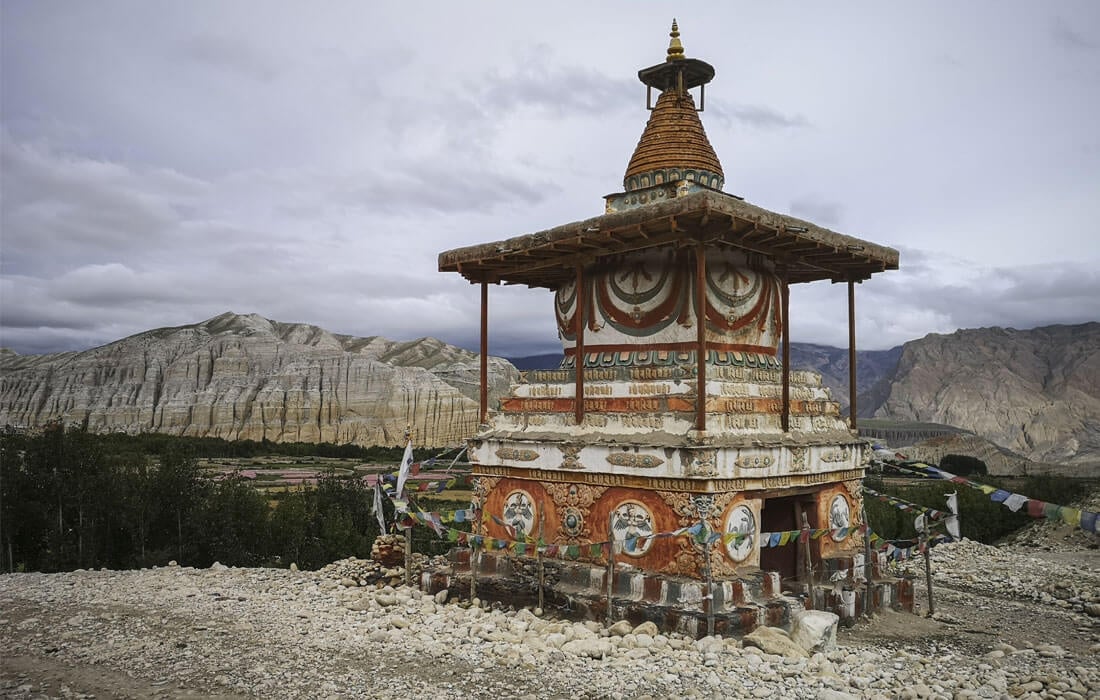











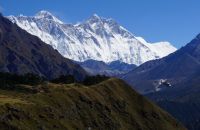
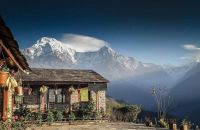
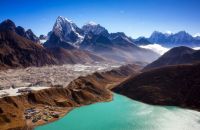
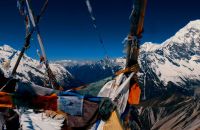
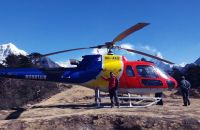
















Recent Comments
A complete guide in real. I loved reading through this details and found it to be useful for planning my trip to Upper Mustang the next year. Thanks Naba Raj.
Is there chances of getting Altitude Sickness during this trek as well?
Very well written and detailed information about the Upper Mustang region of Nepal. This actually is hidden gem of Nepal which only opened to tourist after 1992. Very nice presentation.
Yes it is possible to take a jeep and complete the trek. Taking jeep would be more convenient option as the road ways are connected to the region by now.